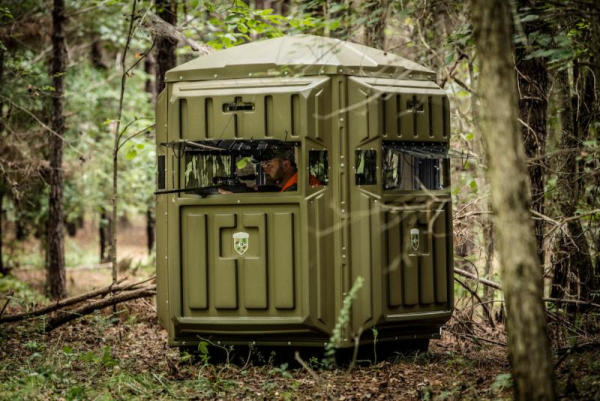Shot Discipline and Mind Control
By Glen Wunderlich
Long-time friend, Joe, and I were discussing various hunting strategies before an archery deer hunt this past week. We recalled a long shot Joe had attempted at a distant antlerless deer years ago. In fact, the shot was too long.
I was in a blind about a quarter mile from Joe, who was armed with a most-potent .300 Winchester Magnum – a real heavy hitter in .30 caliber. Joe was also in a blind with his sights set on the deer that was well beyond 200 yards and within my field of view, as well. I had no idea Joe was about to launch a round at the animal until I heard the report of the rifle. Unscathed, the whitetail doe scampered off to a wood line never to be seen again.
When we met shortly thereafter, I asked Joe what he was doing and the excuse went something like this: “Yeah, it was a long shot and I was wobbling around a bit.” All I could say was, “Then you shouldn’t have taken that shot.” After some more tongue lashing, he got the point and learned from the mistake by taking a disciplined shot that resulted in venison for the freezer the next day. The teachable moment had taken effect.
Already this season, I have been made aware of another instance – this time in Kentucky – in which a seasoned archery deer hunter recounted a failed attempt at taking a trophy whitetail buck. After the shot, the recovery search lasted three hours before being called off. The hunter indicated that the massive buck would have been easily the biggest deer he would ever have taken but one aspect of the questionable shot gave a clue as to the failure. He stated that he could only “guess” that he rushed the shot and did not take a careful look at the [shot] placement.
The teachable moment and of the self-critique is that he cannot recall where his aiming point was when the arrow was released. Think about that for a moment, because it is crucial to any successful shot no matter what equipment is being used. The most important thing to remember is to concentrate on a small aiming point all the way through the shot. The concept is to recall exactly where that aiming point was when the firearm or bow was being held when the gun went boom or the arrow was released. It’s easy to say but harder to do when the mind is racing but the term is “calling your shot.”
“Aim small, miss small” is another common term used to describe the technique. But, when the animal of one’s dreams is within range, we tend to become overwhelmed with thoughts that distract from the task at hand. Those thoughts can produce real effects such as trembling, shaking or involuntary shivering, even when a hunter is not cold. Some call it “buck fever.”
We all practice our shooting techniques to some degree and hopefully to a point where the results on paper will produce ethical conditions afield; to do this when we hunt is the goal.
Concentration is the key. We don’t want to let our minds rule our emotions. We must take ourselves back to the basics of doing what we practiced and to take only disciplined shots.
Sometimes the shot not taken is the best one.





